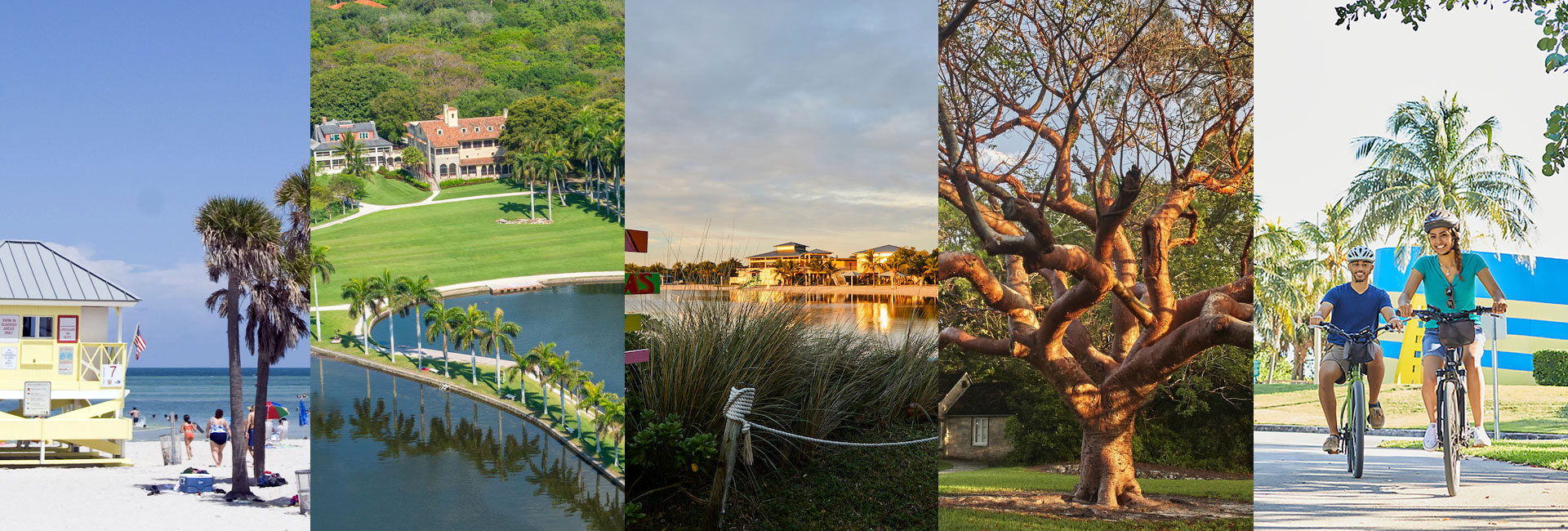Plants in the Sergeant Joseph Delancy Park Butterfly Garden
The Sergeant Joseph Delancy Park Butterfly Garden is a native butterfly garden. This type of garden helps to provide food for butterflies and other pollinators, habitat corridors for migrating animals, shade which decreases the temperature in the area where the garden is planted and improves the overall aesthetics of an area. Native plants can withstand the harsh South Florida climate and require less water and care than non-native plants.
The Sergeant Joseph Delancy Butterfly Garden was planted in the hope that it will be a great educational tool to educate about the benefits of planting natives, gardening, habitat conservation, resiliency and a way to learn about local wildlife.
Learn more about the native plants found in this garden:
Milkweed
Genus: Asclepias
Host plant and scientific name: Monarch Butterfly, Danaus plexippus
There are 20 species of native milkweeds in Florida. Milkweeds are an important nectar plant for bees and other pollinators. The milkweed is the sole food source for the caterpillar of the Monarch Butterfly, so be on the lookout for black, white, and yellow caterpillars. You will also see adult butterflies visiting the milkweed plants being attracted by the beautiful flowers and looking for a place to lay their eggs. Monarch butterfly populations have decreased significantly over the past 20 years mostly due to habitat loss. The milkweed planted in this garden will help provide much needed habitat for this beautiful butterfly species.
Pentas
Genus: Pentas
Pentas are flowering plants that can withstand the harsh Florida sun. They can form red, pink and white flowers, which provide food for humming birds and a wide variety of butterflies.
Salvia
Genus: Salvia
Salvias are another great food source for humming birds and a wide variety of butterflies. Salvias come in a wide variety of colors including scarlet, purple, pink, blue, white or yellow. Just like Pentas, Salvias are well adapted to living in Florida's tropical conditions.
Coontie
Scientific name: Zamia pumila
Host plant: Atala Butterfly Eumaeus atala
Coonties look like ferns, but are actually cycads, a group of plants that are considered living fossils because of their ancient origins. Coontie are well adapted to the heat, soil conditions and salt conditions commonly found in Florida. Coontie produce cones, which you can see at the base of the plant, and this is where seeds are produced. Native Americans and early settlers used coontie as a source of starch in bread making, but if not processed correctly, coontie is toxic to humans. Because this plant was so important to Native Americans and early settlers, that plant was over harvested. Collection of wild coontie is prohibited by law.
Coonie is the sole host plant for the endangered Atala Butterfly. Since Coontie were over harvested, Atala butterflies lost habitat, which affected their population, and they are now are classified as an endangered species. Atala caterpillars are not affected by the toxicity of the Coontie plant and actually use that to their advantage. They store the toxins in there body which makes them an undesirable food source for predators. Adult Atalas are also toxic. The bright colors of the caterpillars, orange-red with yellow spots, warn would be predators that they will not make a good meal. Look for a black butterfly with metallic blue spots and an orange abdomen visiting the garden's coontie plants. That is adult Atala looking for a place to lay its eggs.
Cassia
Genus: Senna
Host plant and scientific names: Cloudless Sulphur Butterfly, Phoebis sennae; Sleepy Orange Butterfly, Eurema nicippe; and Orange-barred Sulphur Butterfly, Phoebis philea
Cassia are a great addition to any butterfly garden because it is the host plant to three species of Florida butterflies: the Cloudless Sulpher, Sleepy Orange and Orange-barred Sulphur. This shrub produces beautiful yellow flowers in the fall months. These plants are tolerant of a wide variety of soil conditions and like full sunshine.
Locations and Hours
All Plants and the Butterfly Garden Locations

Parks, Recreation and Open Spaces
Christina White, DirectorHickman Building
275 NW 2nd Street,
Miami, FL 33128
305-755-7800
